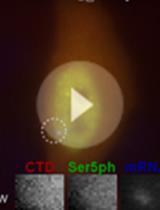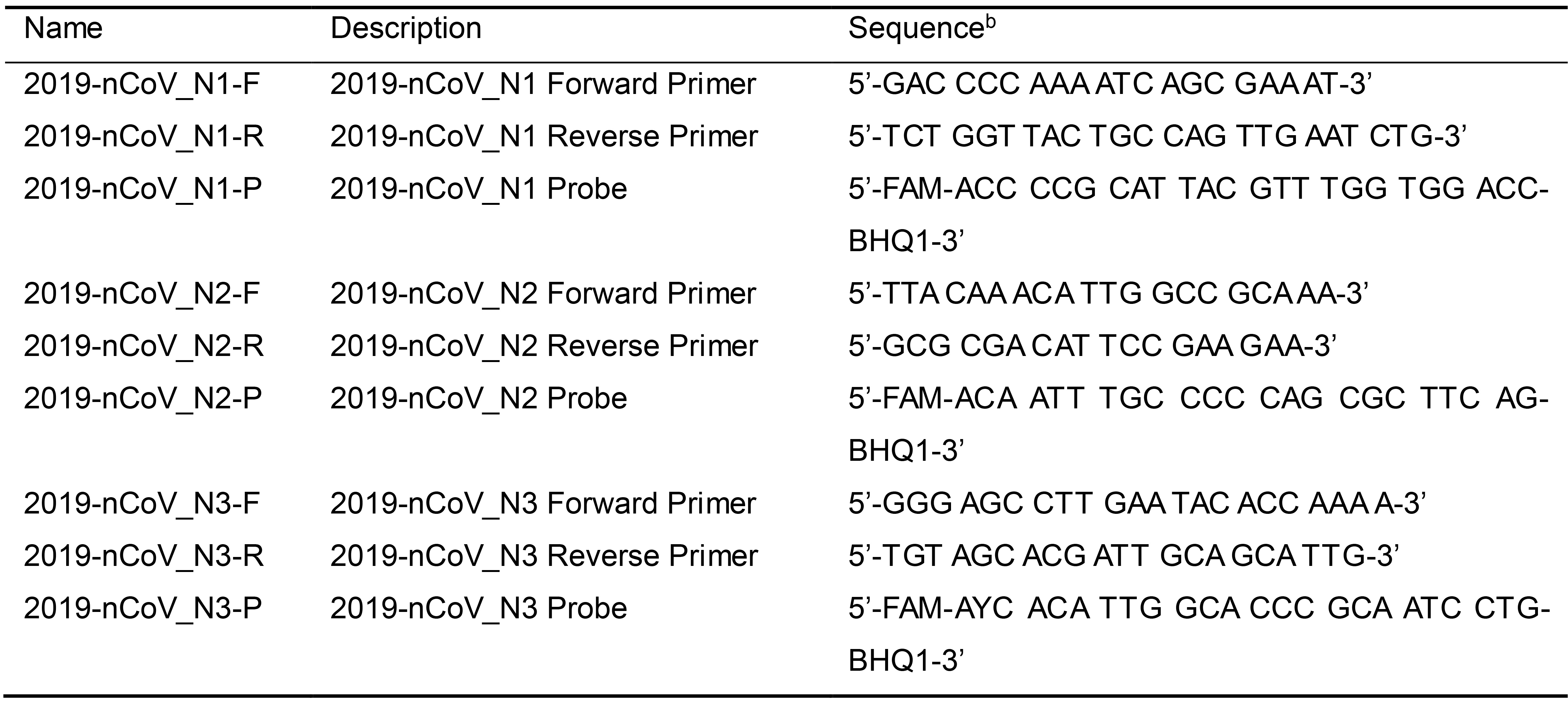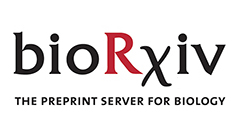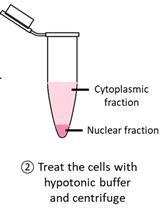- EN - English
- CN - 中文
A One-enzyme RT-qPCR Assay for SARS-CoV-2, and Procedures for Reagent Production
SARS-CoV-2单酶RT-qPCR检测方法及试剂生产程序
发布: 2021年01月20日第11卷第2期 DOI: 10.21769/BioProtoc.3898 浏览次数: 5669
评审: Anonymous reviewer(s)

相关实验方案

活细胞中单拷贝基因内源性 RNA 聚合酶 II 磷酸化的可视化、量化和建模
Linda S. Forero-Quintero [...] Timothy J. Stasevich
2022年08月05日 2472 阅读
Abstract
Given the scale of the ongoing COVID-19 pandemic, the need for reliable, scalable testing, and the likelihood of reagent shortages, especially in resource-poor settings, we have developed an RT-qPCR assay that relies on an alternative to conventional viral reverse transcriptases, a thermostable reverse transcriptase/DNA polymerase (RTX) (Ellefson et al., 2016). Here we show that RTX performs comparably to the other assays sanctioned by the CDC and validated in kit format. We demonstrate two modes of RTX use – (i) dye-based RT-qPCR assays that require only RTX polymerase, and (ii) TaqMan RT-qPCR assays that use a combination of RTX and Taq DNA polymerases (as the RTX exonuclease does not degrade a TaqMan probe). We also provide straightforward recipes for the purification of this alternative reagent RTX. We anticipate that in low resource or point-of-need settings researchers could obtain the available constructs and begin to develop their own assays, within whatever regulatory framework exists for them.
Keywords: Coronavirus (冠状病毒)Background
While various virus detection methods have been implemented for the detection of SARS-CoV-2 infection, including a variety of molecular diagnostics and immunodiagnostic tests, the Reverse Transcriptase quantitative Polymerase Chain Reaction (RT-qPCR) remains the primary and most sensitive test for SARS-CoV-2 detection (D'Cruz et al., 2020; Tang et al., 2020). The primacy of RT-qPCR is in large measure because antibody-based tests as well as rapid nucleic acid diagnostic platforms, such as Abbott IDNow, often suffer from poor sensitivity, especially during early infection when viral loads are generally low in patients (Basu et al., 2020; D'Cruz et al., 2020). Given the importance of the early diagnosis in containing COVID-19 outbreak (Peck, 2020), the need for a rapid and scalable RT-qPCR setup is imminent. Unfortunately, there are increasing shortages of a wide variety of reagents necessary to scale RT-qPCR-based tests (Pettit et al., 2020). The main manufacturers of PCR platforms cannot scale-up the production of tests in sufficient quantities to supply resource-poor settings. Even were resource-poor settings to attempt to develop their own solutions, researchers, clinicians, and public health officials often lack the necessary reagents, including enzymes, to develop testing programs (Kavanagh et al., 2020).
Herein, we layout protocols for dye-based and TaqMan probe-based RT-qPCR assays for CDC-designed SARS-CoV-2 N gene tests (https://www.fda.gov/media/134922/download). We detail a one-enzyme RTX-based RT-qPCR protocol, as well as a two-enzyme RTX/Taq DNA polymerase-based RT-qPCR protocol. While the dye-based one enzyme and the TaqMan probe-based two enzyme RT-qPCR both exhibit comparable performances in the detection of viral RNA, the TaqMan probe-based assay exhibited lower background. In these, we compare our RTX enzyme preparations, for which we provide a detailed purification protocol, with commercially available reagents.
Our RTX-mediated protocols are as sensitive as those that rely on enzyme combinations or commercial enzymes, and can expedite SARS-CoV-2 tests by reducing the number of kits or key enzymes that must be purchased. These protocols can also form the basis for further assay simplification and democratization via the use of so-called ‘cellular reagents’: polymerase-overexpressing cells that can be directly added to molecular diagnostics assays without loss of sensitivity or specificity (Bhadra et al., 2018).
Materials and Reagents
For RTX polymerase-based RT-qPCR analysis
Barrier tips for pipets
Tris-HCl pH7.5 and 8.0 (Sigma-Aldrich, catalog number: T1503 )
(NH4)2SO4 (Sigma-Aldrich, catalog number: A4413 )
KCl (Sigma-Aldrich, catalog number: P3911 )
MgSO4 (Sigma-Aldrich, catalog number: M7506 )
D-glucose (Sigma-Aldrich, catalog number: 47829 )
1% Triton® X-100 (New England Biolabs, B9004S ), store at -20 °C
Forward PCR primers (Integrated DNA Technologies, Table 1) (Note a), store at -20 °C, 100 µM Stock
Reverse PCR primers (Integrated DNA Technologies, Table 1) (Note a), store at -20 °C, 100 µM Stock
TaqMan probes (Integrated DNA Technologies, Table 1) (Note a), store at -20 °C
20x EvaGreen solution (Biotium, #31000), store at 4 °C
4 mM deoxyribonucleotides (dNTP) (New England Biolabs, N0446S ), store at -20 °C
5 M Betaine (Sigma-Aldrich, B0300 ), store at 4 °C
20 U/µl SUPERase·In RNase Inhibitor (Thermo Fisher Scientific, AM2694 ), store at -20 °C
5 U/µl Taq DNA polymerase (New England Biolabs, M0267L ), store at -20 °C
0.2 mg/ml RTX polymerase (Note b) (purified by Ellington lab), store at -20 °C
Nuclease-free water (store at room temperature)
qPCR tubes or plates with optical covers(Note c) (Roche, 04729692001 ), store at room temperature
Cold-block or ice
10x RTX buffer (see Recipes)
10x ThermoPol buffer (see Recipes)
Notes:
Individual primer and probe stocks or pre-made primer-probe mixes for the CDC N1, N2, and N3 assays (Table 1) available from Integrated DNA Technologies may be used.
RTX polymerase with proofreading capability (RTX), and RTX polymerase without proofreading capability (RTX Exo-) have been compared.
LightCycler 96 real-time PCR machine and 96-well plates with optical plastic film cover designed for use with LightCycler platform were used for these experiments.
Table 1. CDC TaqMan RT-qPCR primers and probes for SARS-CoV-2a

aPrimer and probe sequences adapted from https://www.cdc.gov/coronavirus/2019-ncov/lab/rt-pcr-panel-primer-probes.html; last accessed on May 6th, 2020. According to the CDC, oligonucleotide sequences are subject to future changes as the 2019-Novel Coronavirus evolves. Refer to the CDC website for the latest updates.
bFAM: 6-carboxyfluorescein; BHQ-1: Black Hole Quencher 1
For purification of RTX DNA polymerase
Sterile culture tubes and flasks
Centrifugation tubes (Nalgene, catalog number: 3115-0050 )
Sterile syringe filter 0.2 µm (PES, VWR, catalog number: 28145-501 )
RTX or RTX Exo- polymerase expression plasmid (Addgene, Plasmid #102787 and #102786 )
Competent E. coli T7 RNA polymerase-based protein expression strain, such as BL21 (DE3) (New England Biolabs, C2527H ), store at -80 °C
Antibiotics such as ampicillin or carbenicillin (Goldbio, catalog number: 4800-94-6 )
Superior BrothTM (Athena Enzyme SystemsTM , catalog number: 0105 ), store at room temperature
1 M Isopropyl-β-D-thiogalactoside (IPTG) (Sigma Aldrich), store at -20 °C
Ni-NTA agarose (Thermo Fisher Scientific, catalog number: 88223 ), store at 4 °C
Disposable protein purification columns (Thermo Fisher Scientific, catalog number: 29924 )
20,000 MWCO Dialysis cassette (Thermo Fisher Scientific, catalog number: 66012 )
HiTrapTM Heparin HP column (GE Healthcare, catalog number: 17-0406-01 )
Bis-Tris mini protein gel (Thermo Fisher, catalog number: NP0321BOX )
EDTA-free protease inhibitor tablet (Thermo Scientific, catalog number: A32965 )
Note: All chemicals were molecular biology or analytical grade and purchased from Sigma-Aldrich (see below for catalog number) unless otherwise indicated.
NaCl (Sigma-Aldrich, catalog number: S7653 )
Imidazole (Sigma-Aldrich, catalog number: I5513 )
Igepal CO-630 (Sigma-Aldrich, catalog number: 542334 )
MgSO4 (Sigma-Aldrich, catalog number: M7506 )
HEW Lysozyme (Sigma-Aldrich, catalog number: L6876 )
Tris (Sigma-Aldrich, catalog number: T1503 )
DTT (Sigma-Aldrich, catalog number: D9779 )
KCl (Sigma-Aldrich, catalog number: P3911 )
Tween-20 (Sigma-Aldrich, catalog number: P9416 )
Purification buffers for RTX DNA polymerase purification, store at 4 °C (see Recipes)
Resuspension Buffer
Equilibration Buffer
Lysis Buffer
Wash Buffer
Elution Buffer
Heparin Buffer A
Heparin Buffer B
Dialysis buffers for dialysis of RTX DNA polymerase, store at 4 °C (see Recipes)
Ni-NTA Dialysis Buffer
Heparin Dialysis Buffer
Final Dialysis Buffer
Equipment
Magnetic stir bar
Magnetic stirrer
Real-time PCR machine
Note: LightCycler96 real-time PCR machine from Roche was used for these experiments.
Refrigerated shaker incubator (New Brunswick Scientific, model: Innova44 )
Sonicator (Fisher Scientific, Sonic Dismembrator Model 500)
Centrifuge (Beckman Coulter, model: Avanti JXN-26 , Fixed angle)
Thermomixer (Eppendorf, model: Thermomixer C )
Fast protein liquid chromatography (FPLC) machine (GE Healthcare, model: AKTA pure )
Fraction collector (GE Healthcare, model: Fraction Collector F9-R )
Software
LightCycler96 software (Roche; available for download from https://lifescience.roche.com/en_us/brands/realtime-pcr-overview.html#software)
Procedure
文章信息
版权信息
© 2021 The Authors; exclusive licensee Bio-protocol LLC.
如何引用
Bhadra, S., Maranhao, A. C., Paik, I. and Ellington, A. D. (2021). A One-enzyme RT-qPCR Assay for SARS-CoV-2, and Procedures for Reagent Production. Bio-protocol 11(2): e3898. DOI: 10.21769/BioProtoc.3898.
分类
微生物学 > 病原体检测
分子生物学 > RNA > qRT-PCR
您对这篇实验方法有问题吗?
在此处发布您的问题,我们将邀请本文作者来回答。同时,我们会将您的问题发布到Bio-protocol Exchange,以便寻求社区成员的帮助。
提问指南
+ 问题描述
写下详细的问题描述,包括所有有助于他人回答您问题的信息(例如实验过程、条件和相关图像等)。
Share
Bluesky
X
Copy link










